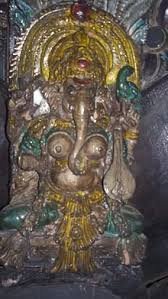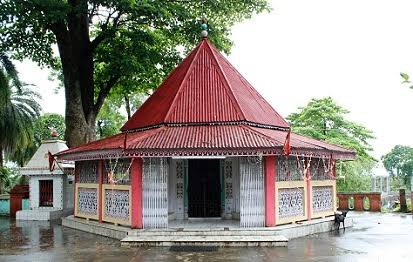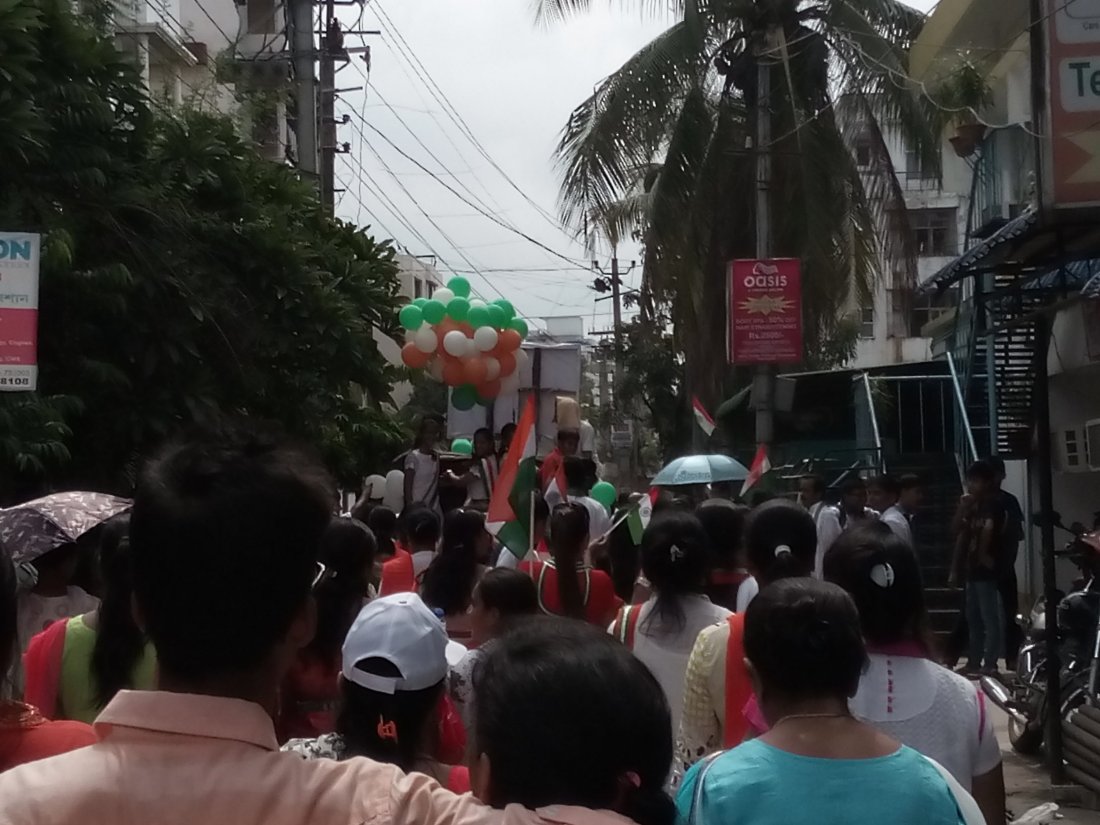India is a land to innumerable number of saints belonging to different religions whose teachings more or less were the same. Different saints came to this world at a different time; some were believed to be a re-incarnation of a God. Some found a new religion whereas some have founded an organization. Below is a list of spiritual saints and sages. The little details about them and the photos that I have used belong to Google and the actual owners. I do not have any right on them. I have tried my best to keep it error free based on whatever details were provided on the internet. It is not possible to include all saints as the list would have been longer and details of all saints are not available on the internet. Some saints were given lots of information, some were given a little information and some even had controversies with details.
01. ANUKULCHANDRA
Anukulchandra Chakravarty was the founder of Satsang organisation and he was born on 14th September, 1888 in Himaitpur Village (present day, Pabna dist, Bangladesh). He left us for heavenly abode on 27th January 1969, at Deoghar Town, Jharkhand, India. His parents were Shri Sivachandra Chakravarty and Smti Manomohini Devi. He was married to Sorashibala Devi (known as Boro Maa) and Sarbomangala Devi (known as Choto Maa). He had 3 Sons; Amarendranath Chakravarty, Bibekranjan Chakravarty and Prachetaranjan Chakravarty (only child of Thakur and Choto Maa) and 3 Daughters; Sadhana Devi, Santwana Devi and Anuka Devi. His guru was Shri Huzur Maharaj.

02. PRANABANANDA
Pranabananda was the founder of Bharat Sevashram Sangha. He was born as Jaynath and was later named Binode by his father. He was born on 29th January 1896 in Bajitpur, Madaripur (Faridpur) Dist, Bengal, British India and he left us on 8th February 1941 at the age of 45 years in Kolkata, Bengal, British India. He was the son of Shri Vishnu Charan Bhuia and Smti Sarada Devi. His diksha guru was Shri Yogiraj Baba Gambhirnathji Maharaj and sanyas guru was Shri Gobindanandagiri.

03. RAMAKRISHNA PARAMHANSA Shri Ramakrishna was the founder of Ramakrishna Order. His philosophy is Advaita Vedanta, Bhakti and Tantra. He was born as Gadadhar Chattopadhyay on 18th February 1836 in Kamarpukur, Bengal Presidency, British India (Present Day – Hoogly, West Bengal, India. He left us on 16th August 1886 at the age of 50 years in Calcutta, Bengal Presidency, British India (present day – Cossipore, Kolkata, W.B. India). He was born to Shri Khudiram Chattopadhyay and Smti Chandramani Devi and was married to Smti Sarada Devi. His guru was Totapuri.

04. SWAMI VIVEKANANDA
Narendranath Datta (shortened to Narendra or Naren) was born on 12th January 1863 in Calcutta, Bengal Presidency, British India (present-day Kolkata, West Bengal, India) was born to Shri Vishwanath Datta and Smti Bhubaneswari Devi. He later came to be known as Swami Vivekananda and he was the founder of Ramakrishna Mission and Ramakrishna Math. His philosophy was Modern Vedanta and Raja Yoga. He left us on 4th July 1902 aged 39 years in Belur Math, Bengal Presidency, British India (present-day West Bengal, India). His guru was Shri Ramakrishna Paramahansadev.

05. SHRI RAM THAKUR.
Shri Radhamadhava Chakravarty and Smti Kamala Devi had a son named Ram Chandra Chakravarty who later came to be known as Ram Thakur was born on 2nd February 1860 in Dingamanik, Faridpur, Bengal, British India (Now Bangladesh). His philosophy was Tantra and Yoga. He died on 1st May 1949 at the age of 89 years in Noakhali, East Bengal, Pakistan (Now Bangladesh).

06. RAMDAS KATHIABABA
There were many kathiababas and one of them was Ramdas. Ram means the Lord Rama of Ayodhya and Dasa means “servant of the Lord”, thus the name Ramdas, as he was a great devotee of Lord Rama. His philosophy was Dvaitadvaita and Nimbarka Sampradaya. He was born in early 19th century in Lonachamari, Punjab, India and died in the year 1909 CE in Vrindavan, Uttar Pradesh, India. His guru was Devdas Kathiababa.
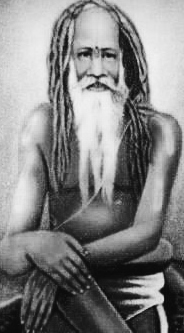
07. SHIRDI SAI BABA
Sai Baba is also known as Shirdi Sai or Sai Baba of Shirdi or Shirdi Sai Baba. Baba’s philosophy was Bhakti Yoga, Sufism, Jnana Yoga and Karma Yoga. Details of his birth and parents are not known as he never revealed his true identity to anyone. He left us on 15th October 1918 in Shirdi, Bombay Presidency, British India (present-day Maharashtra, India). His guru was Shyamacharan Lahiri for Kriya Yoga (according to a book “Purana Purusha”). His famous saying is “Sabka Malik Ek” meaning “God is One”.

08. SHYAMA CHARAN LAHIRI
Shyama Charan Lahiri, affectionately called as Lahiri Mahashaya was born on 30th September 1828 in Ghurni Village (presently a neighborhood of Krishnanagar town) in Nadia district, Bengal Province, British India. His parents were Shri Gaur Mohan Lahiri and Smti Muktakashi. His philosophy is Kriya Yoga. He died on 26th September 1895 at the age of 66 years in Varanasi, United Provinces, British India. He was married to Srimati Kashi Moni who is affectionately called as Guru Maa. They had 2 sons named Tincouri and Ducouri and 3 daughters named Harimoti, Harikamini and Harimohini. His guru was Shri Mahavatar Babaji.

09. SHRI SATHYA SAI BABA.
The founder of Sathya Sai Organisation, Sri Sathya Sai Baba was born as Sathyanarayana Raju. His philosophy was Love All. Serve All. Help Ever. Hurt Never.
Raju was born on 23rd November 1926 in Puttaparthi, Madras Presidency, British India to Shri Peddavenkama Raju Ratnakaram and Smti Meesaraganda Eashwaramma. He left us on 24th April 2011 at the age of 84 years in Puttaparthi, Andhra Pradesh, India.

10. PARAMANANDA
Born as Suresh Chandra Guha – Thakurta on 5th February 1884 in Banaripara Upazila, East Bengal, British India (now Bangladesh). Paramananda’s parents were Shri Ananda Mohan Guha-Thakurta and Smti Brahmamoyee Basu and he was a disciple of Swami Vivekananda. He died on 21st June 1940 at the age of 56 years in Cohasset, Massachusetts.

11. CHAITANYA MAHAPRABHU
Gaudiya Vaishnavism and Achintya Bheda Abheda was founded by Sri Chaitanya Mahaprabhu whose philosophy was Bhakti Yoga and Achintya Bheda Abheda. He was born as Vishvambhar Mishra also known as Nimai. He was born on 18th February 1486 in Nabadwip Dham (present-day Nadia, West Bengal, India), known as Yogapith. He was born to Shri Jagannath Mishra and Smti Sachi Devi. He had 2 gurus, one of them was his mantra guru, Shri Isvara Puri and the other his sanyas guru, Shri Kesava Bharati.

12. TULSIDAS
Tulsidas founded the Sankatmochan Temple of Lord Hanuman in Varanasi. The name ‘Tulsidas’ is derived from ‘tulsi’ a holy basil leaf and ‘dasa’ means servant. His philosophy is based on Ramanandi Sampradaya. He was born as Rambola in the year 1532. There are lots of argument regarding his birth place. There are as many as seven places mentioned as his birthplace. In 2012, Sukarkhet Soron was declared officially by the govt of Uttar Pradesh as his birth place. He died in the year 1623 in Assi Ghat, Varanasi, Awadh Subah, Mughal Empire (present-day Uttar Pradesh, India). He was born to
Shri Atmaram Dubey and Smti Hulsi. Regarding his marriage some say he was married to Ratnavali whereas some claim him to be a bachelor. His guru was Shri Narahari Dasa.

13. MAHAVEER
Mahaveer is believed to be born on
c. 497 BCE according to historical records/ c. 599 BCE according to svetambara / c. 582 BCE according to digambaras. He was born in
Kundagrama, Vaishali, Vajji (present-day Vaishali district, Bihar, India). He was born to King Siddhartha and Queen Trishala. According to Digambaras, his parents wanted him to marry Yashoda but he refused to marry but according to Svetambaras he was married to Yashoda and also had a daughter named Priyadarshana also called as Anojja. He left us on c. 425 BCE according to historical records / c. 527 BCE according to svetambaras / c. 510 BCE according to digambaras in Pawapuri, Magadha (present-day Bihar, India).

14. GURU NANAK.
On 15th April 1469 in Rai Bhoi Ki Talvandi, (present-day Nankana Sahib, Punjab, Pakistan) near Lahore, Guru Nanak was born to Shri Kalyan Chand Das Bedi popularly shortened to Mehta Kalu and Mata Tripta. His parents were Hindu but he founded a new religion, Sikhism. He had an elder sister called Nanki. He was married to Mata Sulakkhani. They had 2 sons named, Sri Chand and Lakhmi Chand. He left us for heavenly abode on 22nd September 1539 aged 70 years in Kartarpur, Mughal Empire (present-day Pakistan).

15. SWAMI BRAHMANANDA.
Rakhal Chandra Ghosh who is known as Swami Brahmananda was born on 21st January 1863 in Sikra Kulingram near Basirhat, Calcutta, British India. He left us on 10th April 1922 aged 59 years in Belur Math, Calcutta, British India. His guru was also Shri Ramakrishna Paramhansadev.

16. JALARAM BAPA
Jalaram Bapa was born on 14th November 1799 in Virpur, Virpur – Kherdi State, British India. Bapa means father in Gujarati. Jalaram was born to Shri Pradhan Thakkar and Smti Rajbai Thakkar. He died on 23rd February 1881 aged 81 years in Virpur, Virpur-Kherdi State, British India. His wife was Virbai Thakkar with whom they had 1 daughter named Jamnaben. His guru was Shri Bhojalram.

17.MOHANANANDA BRAHMACHARI
Mohananda was born Manmohan Bandhopadhyay (Banerjee) on 17th December 1903 in Midnapore, West Bengal and died on 29th August 1999 aged 95 years in Tennessee, United States. His parents were Shri Hem Chandra Bandhopadhyay and Smti Binoyini Debi and guru was Sri Balananda Brahmachari.

18. HARIHARANANDA GIRI
Rabindranath Bhattacharya was born on 27th May 1907 in Nadia district, West Bengal as Hariharananda Giri. His philosophy was Kriya Yoga and he left us on 3rd December 2002 at the age of 95 years in Miami, Florida, United States. His gurus were Bijoy Krishna Chattopadhyay, Yukteswar Giri, Bharati Krishna Tirtha, Paramahansa Yogananda and Satyananda Giri.

19. SANT DNYANESWAR
One of the disciples of Shri Nivruttinath was his younger brother Dnyaneswar who is also known as Dnyandev or Mauli. He was born to Shri Vitthalapant and Smti Rakhumabai in 1275 CE in Apegaon, dist Aurangabad, Maharashtra, India. His philosophy was Advaita, Varkari and Hinduism. He left us in 1296 CE (Sanjeevan Samadhi at the age of 21) in Alandi, British India.

20. SADHAK RAMPRASAD
Sadhak Ramprasad was born as Ramprasad Sen in the year c. 1718 or c. 1723 in Halisahar, near Calcutta, Bengal to Shri Ramram Sen and Smti Siddheshwari. His wife’s name was Smti Sarvani. They had 1 daughter whose name is not known and 1 son named Ramdulal. He died in the year c.1775 in Halisahar, near Calcutta, Bengal, India. His gurus were Shri Madhavacharya and Shri Krishnananda Agamavagisha. Ramprasad composed many devotional songs which used to be dedicated to Goddess Kali and his songs are known as Ramprasadi.

21. SHRI MAHANAMBRATA BRAHMACHARI
Born as Bankim Dasgupta on 25th December 1904 in Khalishakota, Barisal, Bengal, British India. Mahanambrata’s parents were
Shri Kalidas Dasgupta and Smti Kaminisundari Devi and guru was Sripad Mahendraji. He died at the age of 94 years on 18th October, 1999.

22. SHRI VISHUDDHANANDA PARAMHANSA
Shri Akhil Chandra Chattopadhyay and Smti Raj Rajeshswari Chattopadhyay had a son who was named Bholanath Chattopadhyay. He was born on 14th March 1853 in Bondul Village, Bengal Province, British India. His philosophy was Surya Vigyan, Chandra Vigyan, Nakshatra Vigyan, Vayu Vigyan and Yog Jyotish. Bholanath came to be known as Vishuddhananda Paramhansa or most affectionately Gandha Baba (the perfume saint). He was a disciple of Maharshi Mahatapa Paramahansa. He died on 14th July 1937 at the age of 84 years in Kolkata, West Bengal, India.

23. PARAMAHANSA YOGANANDA Yogananda is the founder of Self – Realisation Fellowship and Yogoda Satsanga Society of India. His philosophy was Hinduism and Kriya Yoga. He was born as Mukunda Lal Ghosh on 5th January 1893 in Gorakhpur (present-day Uttar Pradesh, India). Details about his family is not known. He died on 7th March 1952 aged 59 years in Biltmore Hotel, Los Angeles, California and his guru was Swami Yukteswar Giri.

24. SWAMI ABHEDANANDA
The founder of Ramakrishna Vedanta Math in Calcutta and Darjeeling was Swami Abhedananda whose philosophy was Vedanta. He was born on 2nd October 1866 in North Calcutta, Bengal, British India as Kaliprasad Chandra to Sri Rasiklal Chandra and Smti Nayantara Devi. He left us on 8th September 1939 aged 72 years in Calcutta, Bengal, British India. He was also a disciple of Ramakrishna Paramahansadev.
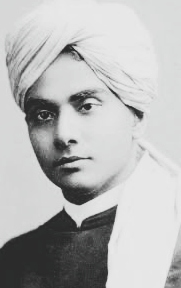
25. SWAMI SATYANANDA
Bihar School of Yoga was founded by
Swami Satyananda Saraswati. He was born on 25th December, 1923 in Almora and died on 5th December, 2009 at the age of 85 years. His guru was Sivananda Saraswati.

26. SWAMI SWARUPANANDA
Ajay Hari Banerjee popularly known as Swami Swarupananda or Babamani was born on 8th July 1871 in Bhawanipur, Bengal, India and died on 27th June 1906 (aged 34), in Nainital, India. His guru was Swami Vivekananda. Details about his family is unknown.

27. MAHAVATAR BABAJI
Mahavatar Babaji was born as Nagarajan on 30th November 203 CE in Parangipettai village, Cuddalore dist, Tamil Nadu, India. His philosophy was Kriya Yoga. Details of his family life and death is not available. His gurus were Shri Siddha Bhogarnathar and Shri Siddha Maharshi Agastya.

28. SAMARTHA RAMDAS
Narayan Suryaji Thosar was born in April 1608 in Jambi village, Jalna district, Maharashtra, India to Shri Suryaji Pant and Smti Ranubai. Narayan later came to be known as Samartha Ramdas and his philosophy was Advaita. He died on 2nd February 1681 aged 73 years in Sajjangad. His guru was Lord Rama.

29. DAYANANDA SARASWATI
Arya Samaj was founded by Dayananda Saraswati and his philosophy was Vedanta. He was born as Mul Shankar Tiwari or Mulshankar Karsandas Tiwari on 24th February 1824 in Tankara, Gujarat, India. His parents were Shri Karshanji Lalji Tiwari and Smti Amrutbai. He left us on 30th October 1883 aged 59 years in Ajmer, Rajasthan, India and he was a disciple of Virajananda Dandeesha.
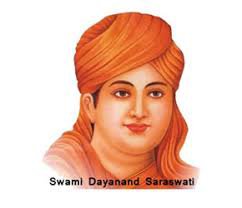
30. RAMANA MAHARSHI
Venkataraman Iyer was born on 30th December 1879 in Tiruchuzhi, near Aruppukkottai, Madurai, Tamil Nadu, India. His philosophy was Advaita Vedanta and his guru was Shri Arunachala. He died on 14th April1950 at the age of 70 years in Shri Ramana Ashram, Tiruvannamalai, Tamil Nadu, India. His parents were
Shri Sundaram Iyer and Smti Azhagammal.

31. NIGAMANANDA PARAMAHANSA
Nalinikanta Chattopadhyay known as Paribrajakacharya Paramhansa Srimat Swami Nigamananda Saraswati Deva or Nigamananda Paramhansa or simply Nigamananda was born on 18th August 1880 in Kutabpur, Nadia, Bengal, British India (at present Meherpur district, Bangladesh) and left us on 29th November 1935 aged 55 years in Kolkata, Bengal, British India to parents Shri Bhuban Mohan and Smti Manikya Sundari Devi. He was married to Sudhansubala Devi. His philosophy is Tantra, Jnana (Vedanta), Yoga, Prema or Bhakti Yoga. His gurus were Bamakhyepa, Sachidananda Saraswati, Sumeru Das ji, Gouri Maa.

32. SANKARACHARYA
Founder of Dashanami Sampradaya and Advaita Vedanta, Shankaracharya was also known as Shankara, Adi Shankaracharya or Shankara Bhagavatpada. His philosophy was Advaita Vedanta. He was born in the year 788 CE in Kaladi (present-day Kochi, Kerala, India). His father’s name is not known but his mother was Smti Sivataraka. His guru was Shri Govinda Bhagavatpada. He left us for heavenly abode in the year
820 CE (aged 32) in Kedarnath (present-day Uttarakhand, India).

33. DURGA PRASANNA
Born in the year 1891 in Rajapur village, district Barishal (presently in Bangladesh), Durga Prasanna’s parents were Shri Umacharan Chakrabarti and Smti Chintamani Devi and his guru was Shri Nigamananda Paramahamsa.

34. KABIR
Kabir is one of the saints whose details are not clearly mentioned anywhere and there are different views according to different hagiographies. He is the founder of Kabir Panth (Path of Kabir). According to some historians he is said to be born in the year 1398 and some say in the year 1440. His parents details are not known as some say he was born in a Muslim family but was raised in a Hindu family while others believe he was born in a Hindu family but was brought up by a Muslim family. Both the Hindus and Muslims followed him and considered him to be of their own. According to some scholars he is believed to have married a girl named Dhania and had
1 son named Kamal and 1 daughter named Kamali. He was a disciple of Swami Ramananda.

35. CHINMAYANANDA SARASWATI
The founder of Chinmaya Mission and Vishva Hindu Parishad was Shri Chinmayananda Saraswati whose philosophy was advaita vedanta. He was born as Balakrishna Menon on 8th May 1916 in Ernakulam, Cochin Princely State, British India and died on 3rd August 1993 aged 77 years in San Diego, California, U.S. He was the son of Shri Vadakke Kuruppathu Kuttan Menon and Smti Parukutti Amma and his gurus were Sivananda Saraswati and Tapovan Maharaj.

36. GAUTAMA BUDDHA.
The founder of Buddhism, a new religion, Buddha is also known as Siddhartha Gautama, Siddhattha Gotama, Shakyamuni or Buddha. His date of birth and death year is little controversial. His birth year is c. 563 or c. 480 BCE, Lumbini, Shakya Republic (according to Buddhist tradition) and died in the year c.483 or c.400 BCE (aged 80) in Kushinagar, Malla Republic (according to Buddhist tradition). His parents were Shri Suddhodana and Smti Maya Devi and was married to Yasodhara and had a son called Rahul.

37. DHANANJAY DAS KATHIABABA
Born as Dhirendra Mohan Chakrabarty on 15.11.1901 in Bhara village, Bankura, West Bengal. His parents were Shri Purna Chandra Chakrabarty and Smti Kshudumoni. His guru was Shri Shantadas Ji Kathia Baba.

38. RAMANUJA
Ramanuja was born as Ilaiyalvar in 1017 CE in Sriperumbudur, Tamil Nadu, India to Shri Asuri Kesava Somayaji and Smti Kanthimathi. He
died in the year 1137 CE (aged 120) in Sri Rangam, Tamil Nadu, India. His philosophy was Vishishtadvaita. His guru was Shri Yadava Prakasa.

39. MADHUSUDAN SARASWATI
Madhusudan was born as Kamalanayana in 1540 CE in Bengal, India. His philosophy is based on Advaita Vedanta. He died on 1640 CE in Bengal India. His gurus were Shri Visvesvara Sarasvati and Shri Madhava Sarasvati.
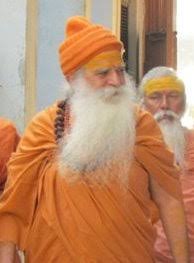
40. RISHI AUROBINDO
The founder of Sri Aurobindo Ashram Auroville near Puducherry ( Pondicherry), Tamil Nadu is Rishi Aurobindo who was born as Aurobindo Ghose on 15th August 1872, Calcutta, Bengal Presidency, British India (now Kolkata, West Bengal, India. His philosophy was integral yoga, involution (Sri Aurobindo), evolution, psychology, intermediate zone and supermind. He died on 5th December 1950 (aged 78), Pondicherry, French India (now in Puducherry, India).

41. LOKENATH BRAHMACHARI
Lokenath or Loknath is often called as Baba Loknath by the people. Baba means someone of a saintly or father figure. His philosophy was karma, bhakti, ashtanga yoga of Patanjali and hatha yoga. He was born as Lokenath Ghoshal on 31st August 1730 in Chakla (or Kachua Dham), Basirhat, North 24 Paraganas, West Bengal, India and left us on 2nd June 1890 in Baradi, district Narayanganj, Bangladesh. He is believed to have survived for 350 years which is little debatable. His guru was Shri Bhagwan Ganguly.

42. PRABHUPADA
Srila Prabhupada was the founder of ISKCON, an international Hare Krishna Movement. His philosophy was Achintya Bheda Abheda. He was
born as Abhay Charan De (also known as Abhay Caranaravinda, Shrila Prabhupada. Prabhupada was born on 04th September 1896 in Calcutta, Bengal Presidency, British India, the next day after Shri Krishna Janmashtami, which marks the birthday of Krishna’s father Nanda. He left us for heavenly abode on 14th November 1977 aged 81 years in Vrindavan, Uttar Pradesh, India. His parents were Shri Gour Mohan De and Smti Rajani De. They married him to Smti Radharani Devi and had 1 son whose name is not known. His guru was Shri Bhaktisiddhanta Sarasvati Thakura.
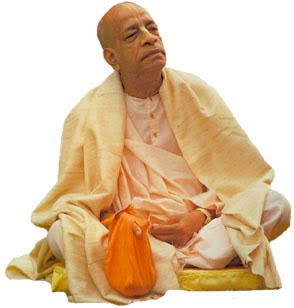
43. BHAKTIVINODA THAKUR
Born as Kedarnath Datta on 02nd September 1838 in Birnagar, British India, Bhaktivoda’s philosophy was Vedanta: Achintya Bheda Abheda. He was married to Shaymani Devi at first and later to Bhagavati Devi after the death of his first wife. He had a total of fourteen children, Bhaktisiddhanta Sarasvati, Lalita Prasad are names of his two children and twelve other children whose name is not known. He left us on 23rd June 1914 aged 75 years in Calcutta, Indian Empire. His gurus were Bipin Bihari Goswami and Jagannatha Dasa Babaji.

44. SANT NAMDEV
Namdev’s philosophy was Varkari. He was born in c. 1720 CE in Maharashtra, India to Shri Damashet and Smti Gonai and was married to
Smti Rajai with whom he had 1 son named Vitha. He left us in the year 1350 CE.

